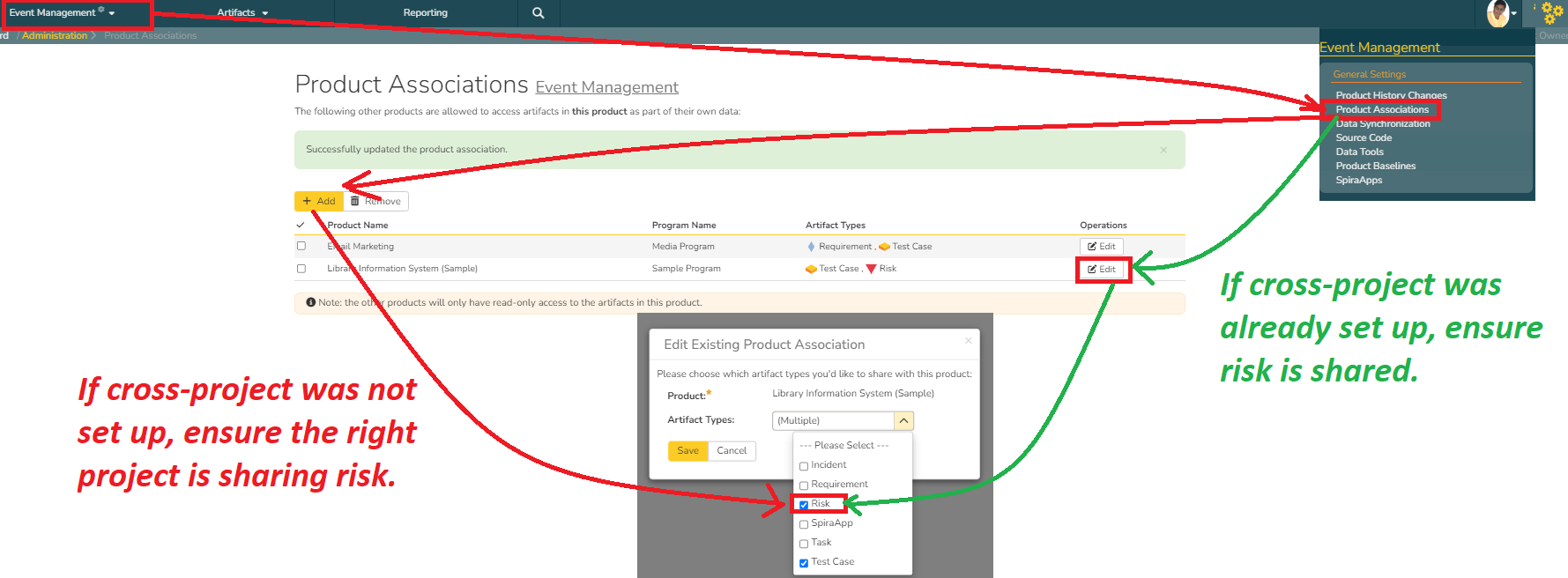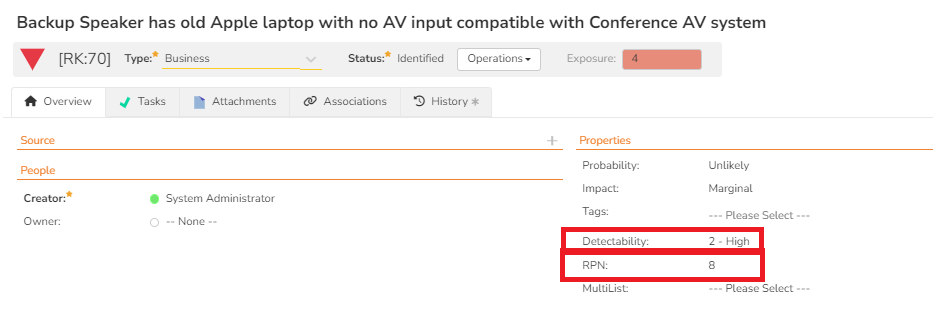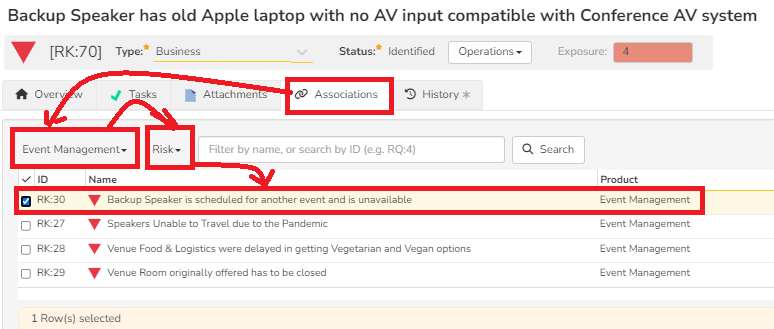Overview
Let us assume that the organization is managing all the risks in a repository. This repository can be managed as a separate project. Let us call this as Events Management Project. This project may be managing all the main primary risks that needs to be addressed.
Now, the event management may need venue management, speaker management, volunteer management, etc. Let us assume that we have a project for speakers.
Step 1. Cross-Project Association
In order for the risks in the speaker project to access the main risks in the main Events Management repository, the first step is to establish the cross project association. To do this, do the following.
- Select the Events Management project
- Go to Admin Panel
- Under the Product settings, select the Cross Project Association
- Click on Add button
- Select the project required
- Ensure risk is enabled
If you already have established a cross-project association but has not enabled the risks, select the "Edit" button next to the project and enable the risk. The following diagram demonstrates this setup.

Step 2: Establish the Main Risks
In the Event Management, set up the risks. If you are using the FMEA setup, enable the FMEA SpiraApp and assess the risk by establishing the probability, severity, and detectability as shown below.

Step 3: Secondary Risk Management
In the Speaker project, enter the new risk and assess the risk similar to the diagram below. In addition, establish the association to the main risk in the Event Management project.
Go to the Association tab of the new risk and do the following:
- Click on the add button
- Select the Event Management product
- Select the risk artifact
- Click on the risk available from the Event Management risk repository
